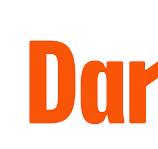In order to be successful in business, it’s important to have a well-developed strategy. A strategy is simply a plan of action that describes how you will achieve your desired outcome. There are many different types of strategies, but all share one common goal: they help you achieve your objectives in a more efficient and effective way.
strategies for business development
Defining Your Business Objectives
Before you can develop a strategy, you need to know what your objectives are. What do you want to achieve with your business? Be as specific as possible. Your objectives might be to:
–Increase sales by X%
-Grow market share by X%
-Enter a new market
–Develop a new product or service
-Improve customer satisfaction levels
Creating a SWOT Analysis
Once you know your objectives, you can start to develop your strategy. One tool that can be helpful in this process is a SWOT analysis. SWOT stands for Strengths, Weaknesses, Opportunities, and Threats. A SWOT analysis is a simple but powerful tool that can help you understand your business’s current situation and identify the best ways to achieve your objectives.
To create a SWOT analysis, start by brainstorming a list of your business’s strengths, weaknesses, opportunities, and threats. Then, for each item on the list, ask yourself how it could help or hinder your ability to achieve your objectives.
For example, if one of your objectives is to increase sales by 10%, your strength might be that you have a loyal customer base. A weakness might be that your prices are higher than your competitors’. An opportunity might be that you’re located in a growing market. A threat might be a new competitor who is opening up a shop nearby.
Once you’ve identified the key items on your SWOT list, you can start to develop strategies that will help you achieve your objectives.
Developing Your Marketing Strategy
Your marketing strategy is a key part of your overall business development strategy. It’s how you will reach your target market and persuade them to buy from you. There are many different types of marketing strategies, but some common elements include setting objectives, identifying your target market, and choosing the right mix of marketing tools.
Your marketing strategy should be aligned with your overall business strategy. For example, if your business objective is to increase sales by 10%, your marketing objective might be to increase brand awareness by 20%.


To develop a successful marketing strategy, you need to have a good understanding of your target market. Who are they? What do they need or want? What are their buying habits? Once you know these things, you can start to develop a marketing mix that will appeal to them.
Your marketing mix is the combination of marketing tools you will use to reach your target market. The most common marketing tools are advertising, public relations, and direct marketing. But there are many other options, including online marketing, events, and promotions.
The key to a successful marketing strategy is to choose the right mix of marketing tools and use them in an integrated way. For example, if you’re trying to reach a target market of busy parents, your marketing mix might include online ads targeting popular parenting websites, as well as in-store promotions and events at local mom-and-pop shops.
No matter what type of business you have, a well-thought-out marketing strategy can help you achieve your objectives.
Developing Your Sales Strategy
Your sales strategy is another key element of your overall business growth strategy. It’s how you will reach your target market and persuade them to buy from you. There are many different types of sales strategies, but some common elements include setting objectives, identifying your target market, and choosing the right mix of sales tools.
Like your marketing strategy, your sales strategy should be aligned with your overall business strategy. For example, if your business objective is to increase sales by 10%, your sales objective might be to increase the number of new customers by 20%.
To develop a successful sales strategy, you need to have a good understanding of your target market. Who are they? What do they need or want? What are their buying habits? Once you know these things, you can start to develop a sales pitch that will appeal to them.
Your sales pitch is the combination of sales tools you will use to reach your target market. The most common sales tools are presentations, product demonstrations, and face-to-face meetings. But there are many other options, including online marketing, events, and promotions.
The key to a successful sales strategy is to choose the right mix of sales tools and use them in an integrated way. For example, if you’re trying to reach a target market of busy parents, your sales pitch might include online ads targeting popular parenting websites, as well as in-store promotions and events at local mom-and-pop shops.
No matter what type of business you have, a well-thought-out sales strategy can help you achieve your objectives.
Creating a Brand Strategy
Your brand is one of your most important assets for your business development. It’s how customers perceive your business, and it can influence their buying decisions. That’s why it’s important to have a clear and consistent brand strategy.
There are many elements of a brand strategy, but some common ones include choosing a name, developing a logo, creating brand guidelines, and establishing a tone of voice.
Your brand strategy should be aligned with your overall business strategy. For example, if your business objective is to increase sales by 10%, your brand objective might be to increase brand awareness by 20%.
To develop a successful brand strategy, you need to have a good understanding of your target market. Who are they? What do they need or want? What are their buying habits? Once you know these things, you can start to develop a brand that will appeal to them.
Your brand is the combination of elements that customers will associate with your business. The most common elements are your name, logo, and tagline. But there are many other options, including color schemes, fonts, and imagery.
The key to a successful brand strategy is to choose the right mix of elements and use them in an integrated way. For example, if you’re trying to reach a target market of busy parents, your brand might include a name that reflects your focus on convenience, as well as a logo and tagline that are friendly and inviting.
No matter what type of business you have, a well-thought-out brand strategy can help you achieve your objectives.


Developing an Advertising Strategy
Advertising is a key element of any marketing strategy that helps in business growth and development. It’s how you raise awareness of your business and persuade customers to buy from you. There are many different types of advertising, but some common elements include setting objectives, identifying your target market, choosing the right mix of advertising tools, and designing creative that will appeal to your target market.
Like your marketing and sales strategies, your advertising strategy should be aligned with your overall business strategy. For example, if your business objective is to increase sales by 10%, your advertising objective might be to increase brand awareness by 20%.
To develop a successful advertising strategy, you need to have a good understanding of your target market. Who are they? What do they need or want? What are their buying habits? Once you know these things, you can start to develop advertising that will appeal to them.
Your advertising should be designed to reach your target market where they are most likely to see it. That might mean online ads targeting popular websites, as well as print ads in relevant magazines or billboards in high-traffic areas.
The key to a successful advertising strategy is to choose the right mix of advertising tools and use them in an integrated way. For example, if you’re trying to reach a target market of busy parents, your advertising might include online ads targeting popular parenting websites, as well as in-store promotions and events at local mom-and-pop shops.
No matter what type of business you have, a well-thought-out advertising strategy can help you achieve your objectives.
Developing a Public Relations Strategy
Public relations (PR) is the process of managing the relationships between your business and the public. It’s about creating and maintaining a positive image for your business. There are many different elements of a PR strategy, but some common ones include setting objectives, identifying your target audience, developing key messages, and choosing the right mix of PR tools.
Like your marketing and sales strategies, your PR strategy for business development should be aligned with your overall business strategy. For example, if your business objective is to increase sales by 10%, your PR objective might be to increase brand awareness by 20%.
To develop a successful PR strategy, you need to have a good understanding of your target audience. Who are they? What do they need or want? What are their buying habits? Once you know these things, you can start to develop a PR campaign that will appeal to them.
Your PR campaign should be designed to reach your target audience where they are most likely to see it. That might mean online ads targeting popular websites, as well as print ads in relevant magazines or billboards in high-traffic areas.
The key to a successful PR campaign is to choose the right mix of PR tools and use them in an integrated way. For example, if you’re trying to reach a target market of busy parents, your PR campaign might include online ads targeting popular parenting websites, as well as in-store promotions and events at local mom-and-pop shops.
No matter what type of business you have, a well-thought-out PR strategy can help you achieve your objectives.
Developing a Social Media Strategy
Social media is a powerful marketing tool that can be used to promote your business and build relationships with customers and prospects. There are many different social media platforms, but some of the most popular ones include Facebook, Twitter, LinkedIn, and Instagram.
To develop a successful social media strategy for business development, you need to have a good understanding of your target audience. Who are they? What do they need or want? What are their buying habits? Once you know these things, you can start to develop content that will appeal to them.
Your social media content should be designed to reach your target audience where they are most likely to see it. That might mean posts on popular platforms like Facebook and Twitter, as well as LinkedIn groups and forums.
The key to a successful social media strategy is to choose the right mix of social media tools and use them in an integrated way. For example, if you’re trying to reach a target market of busy parents, your social media strategy might include posts on popular parenting websites, as well as promotional events at local mom-and-pop shops.
No matter what type of business you have, a well-thought-out social media strategy can help you achieve your objectives.
Developing an Email Marketing Strategy
Email marketing is a powerful marketing tool that can be used to promote your business and build relationships with customers and prospects. It’s an effective way to reach a large audience with your marketing messages without incurring high costs.
To develop a successful email marketing strategy, you need to have a good understanding of your target audience. Who are they? What do they need or want? What are their buying habits? Once you know these things, you can start to develop content that will appeal to them.
Your email marketing content should be designed to reach your target audience where they are most likely to see it. That might mean emails targeting their personal inboxes, as well as opt-in lists for relevant websites and forums.
The key to a successful email marketing strategy for business development is to choose the right mix of email marketing tools and use them in an integrated way. For example, if you’re trying to reach a target market of busy parents, your email marketing strategy might include promotional messages sent to their personal inboxes, as well as opt-in lists for popular parenting websites.
No matter what type of business you have, a well-thought-out email marketing strategy can help you achieve your objectives.
Developing a Promotions Strategy
Promotions are a powerful marketing tool for business development that can be used to generate interest in your products or services and increase sales. There are many different types of promotions, but some of the most popular ones include coupons, discounts, contests, and sweepstakes.
To develop a successful promotional strategy, you need to have a good understanding of your target audience. Who are they? What do they need or want? What are their buying habits? Once you know these things, you can start to develop promotions that will appeal to them.
Your promotions should be designed to reach your target audience where they are most likely to see them. That might mean online ads targeting popular websites, as well as offline ads in local newspapers and magazines.
The key to a successful promotional strategy for business development is to choose the right mix of promotional tools and use them in an integrated way. For example, if you’re trying to reach a target market of busy parents, your promotional strategy might include online ads targeting popular parenting websites, as well as offline ads in local mom-and-pop shops.
No matter what type of business you have, a well-thought-out promotions strategy can help you achieve your objectives.
Conclusion
No matter what type of business you have, a well-thought-out marketing strategy can help you achieve your objectives. In this article, we’ve provided tips on developing successful social media, email marketing, and promotional strategies. We hope that these tips to develop strategies for business development will help you create a plan that works for your business and helps you reach your target market. Thanks for reading!





